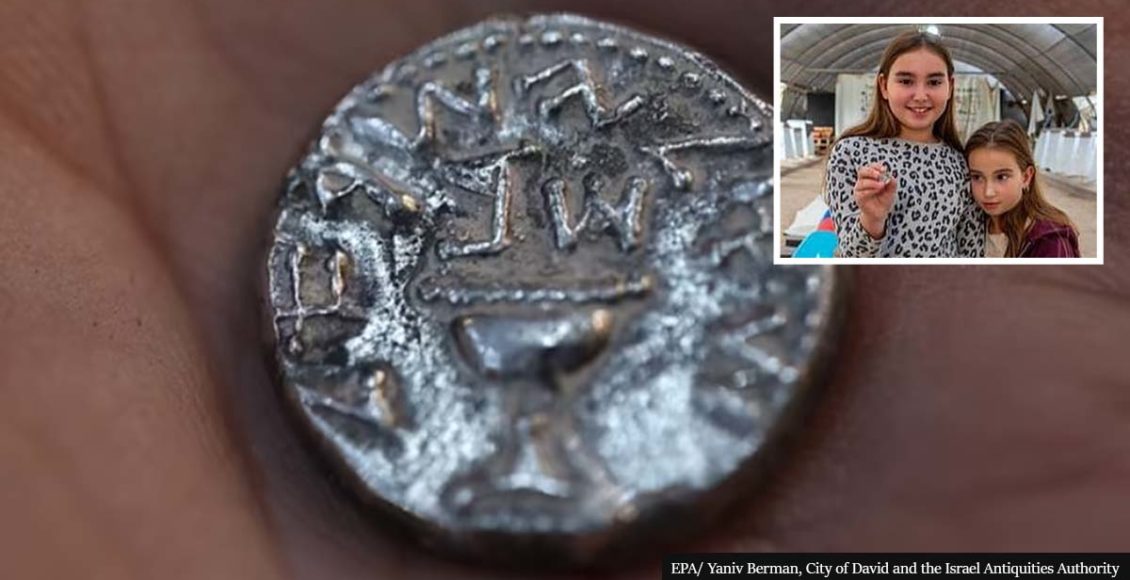A precious historical silver coin from the first century was found by an 11-year-old archeological project volunteer.
According to the Antiquities Authority (IAA), the coin was likely created by a priest who joined the Jewish rebels against the Romans, which would make it one of the priceless few remains that come from the Temple.
Dr. Robert Kool, head of the Coin Department at the IAA, said:
“This is a rare find, since out of many thousands of coins discovered to date in archaeological excavations, only about 30 are coins made of silver from the period of the Great Revolt.”
The silver coin weighs 14 grams and has an engraving of a cup carrying the words: “Israeli shekel” and “second year,” referring to the second year of the revolt (67-68 CE).
The other side of the coin has an engraving that reads “Holy Jerusalem” in ancient Hebrew, in addition to another word that experts believe refers to the headquarters of the High Priest in the Temple.

The piece was found by a girl named Liel Krutokop, who is part of the Emek Tzurim Sifting Project, which involves volunteers sifting through dirt excavated from the Pilgrimage Road.
She came with her family from Petah Tikva for the project at the City of David.
“When I got to Emek Tzurim I thought there must be simple coins in the buckets, but I did not think I would find a coin myself, and certainly not such a rare coin from pure silver,” Liel said. “I was lucky to find it, but I also want to say thank you to my sister for choosing the bucket we sifted. If she had not chosen this particular bucket, I probably would not have found the coin.”
Back in those days, coins were seen as a crucial expression of sovereignty, and silver coins represented its height as they were much more precious than the regular bronze coins.
With a bronze coin, a person could buy a couple of loaves of bread, while the silver coin could be used to purchase much more pricey products, including military equipment.
“A currency is a sign of sovereignty,” Kool said. “If you go into rebellion, you use one of the most obvious symbols of independence, and you mint coins. The inscription on the coin clearly expresses the rebels’ aspirations. The choice to use ancient Hebrew script, which was no longer in use at the time, is not accidental. The use of this script came to express the longing of the people of the period for the days of David and Solomon and the days of a united Jewish kingdom – days when the people of Israel had full independence in the land.”

The temple was home to a lot of coin, and Kool is of the mind that the silver used to mint the coin probably originated from those reserves, considering its quality.
“If so, we can cautiously say that this coin is apparently one of the only items we can hold today that originated on the Temple itself,” Kool said.
Ari Levy, the archeologist in charge of the excavation, said the street where the coin was unearthed,
“which connected the Shiloah Pool in the south of the City of David to the Temple Mount in the north, was Jerusalem’s main street during the Second Temple period, where thousands of pilgrims marched on their way to the Temple. There is no doubt that there would have been extensive trading here. This is evidenced by the many weights and bronze coins we have found here. But to find a rebel coin made of pure silver is definitely very special and exciting.”
What are your thoughts on this girl’s exciting discovery? Let us know by joining the conversation in the comments and please share this article if you’ve enjoyed the read.


